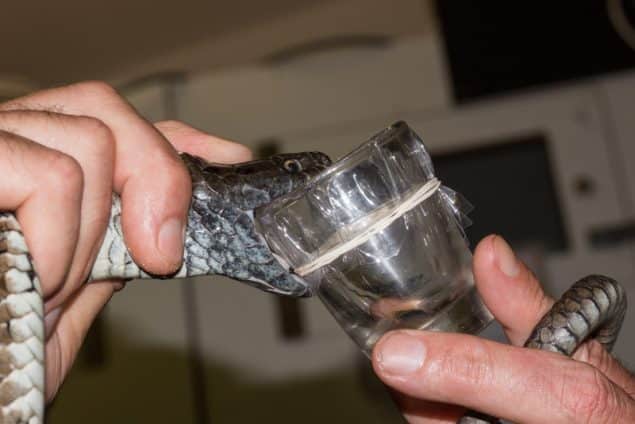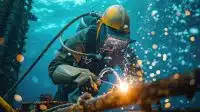Home » Spotlight » The Fascinating – And Deadly – World Of ‘Milking’ Deadly Snakes
The Fascinating – And Deadly – World Of ‘Milking’ Deadly Snakes
https://www.whatjobs.com/news/what-news-topical/dangerous-jobs-milking-deadly-snakes-to-make-life-saving-anti-venom

By Hugh Fort in Spotlight, posted February 5, 2024

A fear of snakes is called Ophidiophobia, and is defined as "an extreme, overwhelming fear of snakes".
People who suffer from this are unlikely to become a professional "snake-milker."
However, there are people who don't suffer from this.
These people find themselves in the fascinating, and very dangerous, world of "snake milking.
Snake milkers are responsible for extracting, or "milking," venom from poisonous snakes in a safe and controlled environment.
READ MORE: Dangerous jobs: The perils of being a deep sea diver
A variety of applications use this venom, including producing antivenom for snakebite treatments, conducting medical research, and sometimes making specialized drugs.
If you're keen on the job, you'll need to have huge knowledge of some of the world's deadliest snakes.
The key is knowing how to handle them without being given a fatal dose of really nasty venom.
Here's a typical day in the life of a snake milker
A snake milker's day typically starts with preparation. This includes ensuring that the milking area is clean and sterile, checking the equipment such as venom collection jars and snake-handling tools, and observing the snakes for any signs of illness or stress
The snake milker carefully selects a snake from its enclosure, using special tools and protective gear to ensure safety.
The reptile must be handled with care, both for the milker's safety and to avoid causing unnecessary stress to the snake.
The snake is then gently encouraged to bite down on a specialized container, typically a venom collection jar covered with a piece of latex that the snake's fangs can puncture.
As the snake bites, its venom glands are massaged to promote the flow of venom, which drips down into the container.
This is a delicate process and requires a lot of precision and patience.
The milked snake is then monitored for stress and discomfort after it returns to its enclosure.
The milker then safely stores the collected venom and cleans the equipment and milking area.
Snake milkers also play a role in educating others about snakes and their important role in ecosystems. They may also collaborate with researchers studying snake venom and its potential medicinal uses.
Record keepers maintain detailed records about the species of snake, the amount of venom collected, the snake's health condition, and other relevant information.
This data is vital for research and for tracking the health and wellbeing of the snakes.
Need Career Advice? Get employment skills advice at all levels of your career
"It's always my fault when I get bitten"
One well-known snake milker is Jim Harrison, the director of the Kentucky Reptile Zoo, one of the largest venom operations in the United States.
In an interview with National Geographic, he said: "I've been bitten by a lot of venomous snakes, and it’s always my fault. [...] When I was a kid, people told me that I can't make a living playing with snakes. And they were wrong."
And speaking to The Mirror in 2014, he revealed an encounter with a lancehead viper left him needing three operations and a month in hospital.
Snakes have bitten him bitten eight times.
As a result, he has some of his fingertips, but that doesn't stop him.
He said: "We have around 2000 snakes on site and average between 600-1000 extractions a week.
"The perception of anyone who keeps snakes is a little weird - people don't understand why you would risk your life.
"But the reality is it's not that much risk if you use precautions, I think people get carried away from watching TV and the danger.
"Truthfully any of the snakes could be dangerous but they're only dangerous if you do something stupid."
Follow us on YouTube, Twitter, LinkedIn, and Facebook.














